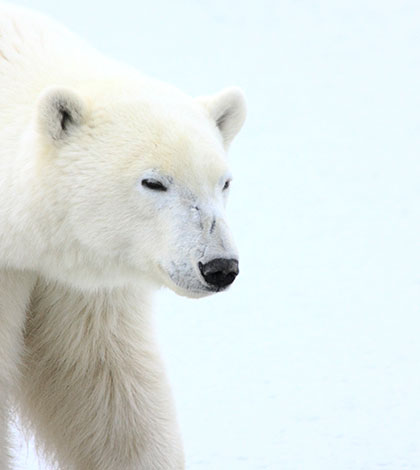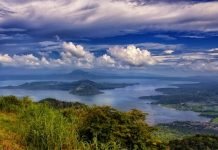This report is reprinted with permission from the World Preservation Foundation. To read the original with references, please read “Maintaining a Climate of Life” at www.worldpreservationfoundation.org.
Biodiversity in Planetary Ecosystems: Life on Earth as We Know It
The current health status of the biosphere
The United Nations researchers have stated that any disruption in the environmental integrity provided by biodiversity and balanced ecosystems threatens humanity with reduced water supplies, rising food prices and an increased likelihood of war. However, biodiversity continues to be lost 1,000 times faster than the background extinction rate of the 600m-year fossil record, with many scientists warning that the situation is as critical as climate change and indicating that Earth may be experiencing the sixth great extinction in its history. Perhaps more worryingly, the UN Convention on Biological Diversity’s Global Biodiversity Outlook 3 report states that the loss of life-sustaining natural systems and habitats could reach the point of irreversibility, resulting in a move toward “tipping points” beyond which ecosystems involved in climate regulation and food chains may be permanently damaged or lost.
With deforestation, pollution and overexploitation damaging the productive capacity of Earth’s most vulnerable environments, such as lakes, coral reefs and the Amazon rainforest, Executive Secretary of the UN Convention on Biological (CBD) Diversity Dr. Ahmed Djoghlaf states:
The UNCBD report adds to data from the International Union for Conservation of Nature (IUCN) showing that 21 percent of all known mammals, 30 percent of amphibians and 35 percent of invertebrates are threatened with extinction, with the present time being the first since the age of the dinosaurs that plants and animals are being driven to extinction faster than new species can evolve. Dr. Djoghlaf notes that countries have failed to honor pledges to reduce the rate of biodiversity loss and warns:
Pricing the priceless: the economic ramifications of biodiversity loss
The Economics of Ecosystems and Biodiversity (TEEB) Review of 2008, also known as the ‘Stern Review’ of Biodiversity, examined global economic considerations related to biodiversity loss and ecosystem decline. TEEB is an international initiative hosted by the UN Environment Program (UNEP). The review found that a more fragile environment will risk the loss of human lives and livelihoods and adversely affect the global economy, asserting that global market value of goods and services produced within a country in a given time period, or Gross Domestic Product (GDP), could fall seven percent by 2050 if biodiversity levels and ecosystems are not protected, and that humankind is causing damage to terrestrial ecosystems totaling £40bn annually; the cost of species loss is arguably unquantifiable.
The most recent TEEB paper, released in advance of the CBD summit in Japan October 2010, examines the ratio between the costs of conserving biodiversity and those of their benefits. In an interview, TEEB report team leader economist Pavan Sukhdev states:
UN: “Livestock — the leading player in the reduction of biodiversity”
UN report outlines a long shadow of biodiversity loss, climate-change-inducing greenhouse gases, land degradation and more
In the 2006 UN Food and Agricultural Organization (FAO) report Livestock’s Long Shadow, the livestock group within the FAO asserts that consumption of animal products is severely threatening Earth’s biodiversity and ecosystems:
In an overview of the report, the FAO states that an estimated 80 percent of growth in the livestock sector comes from industrial production systems, causing livestock to directly compete with humans for scarce land, water and other resources, with this sector being by far the largest anthropogenic user of land; specifically, grazing occupies 26 percent of the Earth’s terrestrial surface, and feed-crop production consumes approximately one third of all arable acreage. The report also reveals that the expansion of grazing land for livestock is a key factor in deforestation, especially in Latin America: Some 70 percent of previously forested area in the Amazon region is now used as pasture, and feed crops cover a large part of the remainder. Furthermore, 70 percent of all grazing land in dry areas is considered degraded, mostly due to overgrazing, compaction and erosion attributable to livestock activity.
Examples of Dietary Impacts on Biodiversity: Deforestation and Oceanic Ecosystem Collapse
Cattle production/consumption responsible for 80% of Amazonian deforestation
The Millennium Ecosystem Assessment, an international scientific appraisal involving the work of more than 1,360 experts, confirmed the most important causes of biodiversity loss to be habitat change (mainly produced by land-use change), over-exploitation, the introduction of non-native species, pollution and climate change, with livestock production contributing significantly to each of these factors and having the greatest impact on changes in land use.
In a more remonstrative tone, the 2009 Greenpeace report Slaughtering the Amazon highlights how the cattle sector in the Brazilian Amazon is responsible for 14 percent of the world’s annual deforestation. The Brazilian government is quoted therein as stating, “Cattle are responsible for about 80 percent of all deforestation” in the Amazon region. Such over-consumptive practices are shown to cause diverse species to be deprived of food sources, as well as chronic deforestation and expansion of oxygen-depleted zones in the tropical Atlantic and Pacific Oceans.
Oceanic ecosystems: avoid complete collapse by 2048 with plant-based foods
Many people mistakenly think that by shifting their diet from meat to fish, they can avert the environmental and health detriments associated with eating meat. However, this is a perilous misconception, because if the land is in danger, the oceans are in much greater jeopardy. By comparison, 30 percent of land-animal species have been lost since the 1970s, but in the same period 91 percent of the ocean’s fish have been halved in number, and 45 percent have either nearly or completely disappeared.
Loss of marine life is already estimated to be impairing the ocean’s ability to maintain water quality and to recover from perturbations. Scientists estimate that the current trends are leading us to a complete collapse of global fisheries by around 2050. Aquaculture is no answer, either, because it is typically necessary to feed one to two kilograms of sea-caught fish to grow one kilogram of farm-raised fish, making the latter artificial predators in the oceans.
Plant-based Diets Protect Biodiversity by at Least 60%
New study: no-meat diet would prevent over 60% of biodiversity [MSA] loss
A new UNEP-requested report by the Netherlands Environmental Assessment Agency (PBL) entitled Rethinking Global Biodiversity Strategies explores structural changes in production and consumption to lessen biodiversity loss. The study evaluated eight options to address this problem, such as reducing deforestation, changing diets, and reducing fishing. The report is part of the UNEP’s initiative The Economics of Ecosystems and Biodiversity (TEEB).
The most powerful strategy for reducing and preventing biodiversity decline was found to be a change to a no-meat diet. The change was calculated as starting from this year (2010) and continuing to 2030, after which it would remain level until 2050, with meat proteins being substituted by various plant-based proteins.
The report states:
Most startlingly, the study found that the “no-meat” diet variant, which included dairy products and can thus be taken as more conservative (lower) than the figure for a fully plant-based diet, would reduce mean species abundance (MSA) loss by 4 percentage points; in other words, a no-meat diet would reduce biodiversity loss by over 60%.
UN: “Reduce meat to protect biodiversity”
The call to change from meat products to minimize environmental harm and benefit the planet is not new. Livestock raising has for long been recognized by the UN as a significant cause of biodiversity loss. More recently, livestock’s role in biodiversity loss and other major environmental effects has led to a UN call for governmental policy changes.
The UN Convention on Biological Diversity’s (UNCBD’s) Global Biodiversity Outlook 3, released in May 2010, strongly recommends a reduction in meat production and consumption, highlighting the need to remove or “[avoid] perverse subsidies to minimize unsustainable resource use and wasteful consumption,” in reference to underlying causes and indirect drivers of biodiversity decline, including livestock. This supports the following comments by United Nations Intergovernmental Panel on Climate Change (IPCC) Chairman Dr. Rajendra Pachauri:
The UNCBD report further encourages the promotion of market incentives to encourage healthier food options and better use of natural resources, concluding,
Green light for green eating: dietary change and environmentalism
Major international environmental organizations also recognize that the multiple negative ecological effects of livestock production are avoidable through collective and individual choice. For example, Vicki Hird of Friends of the Earth – England, Wales and Northern Ireland states that biodiversity loss
Greenpeace and the World Wildlife Fund are also disseminating information on how diet can be a powerful tool for individuals to use to affect the planet in either destructive or constructive ways. However the public is still largely unaware that dietary change can have immense ecological benefits. And the sooner this situation changes, the more quickly biodiversity will be on the path to recovery.
Conclusion: The Urgency of Opportunity
“We know what we need to do. We know what works.”
Speaking on May 21, 2010, the International Day for Biodiversity, UN Secretary-General Ban Ki-Moon emphasized the urgency of maintaining ecosystems so that they can sustain life, adding that the solutions are before us, if only we have the will to implement them:
No-Meat Nutrition: a sustainable world for all
In conclusion, the livestock industry and widespread consumption of animal-based foods are among the most significant drivers of biodiversity loss, climate change, deforestation, food and water insecurity and oceanic-ecosystem collapse. However, through the implementation of immediate, progressive measures, Earth’s ecological balance can be restored and the United Nations Millennium Development Goals can be reached. Moreover, those who choose to consume plant-based foods are likely to be healthier and can feel confident that their diet is both nutritionally sound and also promotes the sustenance of life and global biodiversity. Every vegan meal chosen over a meat- or dairy-based meal is a step toward a sustainable, healthy planet for all of its co-inhabitants. Through a new vision that supports the removal of livestock-related subsidies, the start of far-reaching education and public-information initiatives and other socio-economic programs, the requisite sea-change in perception can be effected, civilization can survive, and future generations can prosper in greater health and environmental balance.
The World Preservation Foundation is an organization serving as a resource of scientific information relating to climate change to help facilitate beneficial legislation and policies to mitigate climate change and reduce its devastating impacts.
For further information or references on the report, see World Preservation Foundation Website: www.worldpreservationfoundation.org
 The Supreme Master Ching Hai
The Supreme Master Ching Hai


